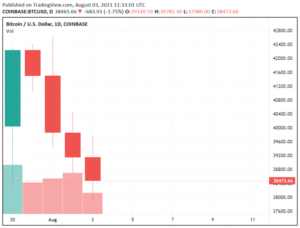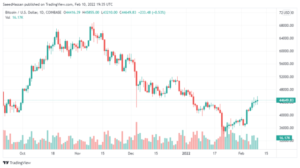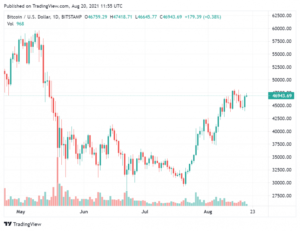Bitcoin fundamentals being so strong helped send the cryptocurrency into a parabolic uptrend. Blockchain data revealed each times coins left exchanges in bulk, and the reduction in BTC reserves was evident to any onlooker thanks to the transparency the tech provides.
But unfortunately, a recent wave of bullish fundamentals still failed to overpower bearish technicals and sentiment, which have now turned the trend for the time being. Here’s a deeper look at why fundamental analysis, while effective, isn’t flawless and is only one piece of the puzzle.
Once Flawless Crypto Fundamental Analysis Flips On Quant Analysts
Fundamental analysis focuses on data, not charts, but is equally important as technical analysis. Fundamental analysis can further be broken down into qualitative and quantitative analysis.
Quant data has been especially effective in predicting crypto market price action recently, especially around Bitcoin. In markets, prices are set by the constant push and pull of supply versus demand.
Related Reading | This On-Chain Metric Says Bitcoin Risk Is The Highest In Three Years
Cryptocurrencies, thanks to blockchain tech, offer the benefit of getting an exact look at supply and how that supply moves. Knowing BTC – and more recently ETH – were leaving exchanges in such a dramatic fashion, investors also could surmise that a supply shock was coming.
However, recently, all the bullish fundamentals in the world haven’t been able to save Bitcoin from a now 35% crash. The fundamental picture turned in a flash, allowing overheated technicals to fully take over.

Flawed fundamental analysis calls in action | Source: BTCUSD on TradingView.com / Via: Twitter
The Best Bitcoin Strategy Includes Technical Analysis
Coinbase Pro outflows are the “most bullish signal ever.” “Don’t worry,” “your portfolio is the same as institutional investors in the States.” Stablecoin supply reaching new highs means “another leg” is coming in Bitcoin.
These are very real statements made by quant analysts that were dead wrong. A string of correct calls based on blockchain data left the team of analysts overconfident, and it could have cost their followers.
This is no different from the droves of technical analysts out there, so there’s no finger pointing necessary for the flawed predictions. We’re all human, after all, and the point to take away is that all types of analysis are subjective – and effective.
Combining fundamental analysis and technical analysis can be a one-two punch for predicting price action reliably.
Related Reading | Bitcoin NFT “The Death Of Fiat” Commemorates Historic Crypto Bull Run
Far too many bearish technical signals had been piling against Bitcoin to keep coins from hitting exchanges. Once prices started to turn, investors sent their BTC back to exchanges to take profits – something that is completely counter to the fundamental claims made previously.
Coins are still moving off of Coinbase en masse, so this could be a sign that the underlying bull trend is fine, and institutions are indeed accumulating at lower prices. Fundamental analysis in this case would ultimately be correct, it is just that technical analysis was more important for the time being.
The next time you write off TA, or talk about how few coins are on exchanges, remember that sentiment can also shift at the drop of the dime. Elon Musk has turned, and with it, potentially changed the short-term trend. No amount of TA or FA could have predicted that – or could it have?
Featured image from iStock Photos, Charts from TradingView.com
- Action
- All
- Allowing
- analysis
- around
- bearish
- BEST
- Bitcoin
- blockchain
- BTC
- Bullish
- Charts
- claims
- coinbase
- Coins
- coming
- crypto
- Crypto Market
- cryptocurrency
- data
- dead
- Demand
- Drop
- Effective
- Elon Musk
- ETH
- Exchanges
- Fashion
- fine
- Flash
- follow
- Fundamentals
- How
- HTTPS
- image
- Institutional
- institutional investors
- institutions
- Investors
- IT
- Market
- Markets
- NFT
- offer
- picture
- portfolio
- Predictions
- price
- Pro
- quantitative
- Reading
- Risk
- sentiment
- set
- shift
- So
- stablecoin
- started
- States
- Strategy
- supply
- tech
- Technical
- Technical Analysis
- time
- Transparency
- Versus
- Wave
- world










